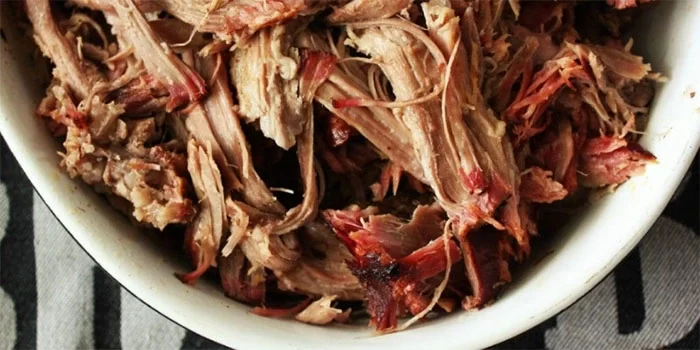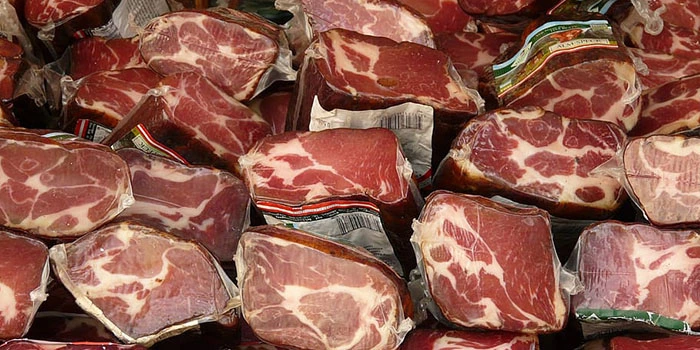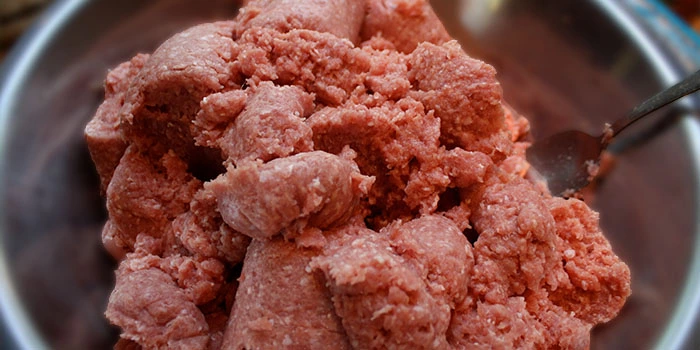Pulled pork being an amazing barbeque dish, has one confusion to all. That is, whether to brine it or not. Most barbeque lovers have this question.
But to make things easier, we are here to help.
So the question is, Pulled pork: to brine or not to brine?
Brining pulled pork is not a necessity. Due to already having enough fat, there’s no harm if not brined. However, brining makes it more juicy and tender. It also makes the pork robust with flavors.
Well, this was just the tip of the iceberg. There’s a whole process of brining. In fact, we have stored for you an even better alternative than brining.
So let’s not waste any more time and get straight at it!
Is Brining Really Necessary for Pulled Pork?
Brining is not absolutely necessary for pulled pork. But it’s better to brine. Brining adds more flavor into the pork shoulder throughout the cooking process. Even if you decide not to brine pulled pork, you need to apply alternatives which we’ll discuss soon.
Not only that, but bringing also makes the pulled pork more juicy and tender. How so? Well, it helps the pork retain moisture when it’s cooked. You see, when the pulled pork is cooked, natural juices from it tend to evaporate.
But brining it beforehand can help those juices and flavors to reabsorb when cooked via the salts. Plus, you get the hit of flavor from the ingredients that you brined the pulled pork with. Also, if you are cooking smoked pork shoulder, then brining the meat beforehead is essential.
So, to put it simply, the benefit you will get from brining is additional flavoring. However, keep in mind that flavors depend on the brine solution you make. If you only make a brine with water and salt, it’s not gonna do any mentionable flavoring. Adding apple ciders, apple cider vinegar, grape juice, peach juice, and flavoring ingredients to the brine solution will add flavors.
But there are a large number of cooks out there who don’t prefer brine. There are 2 categories of these people. The first of them don’t care that much about flavors. They like the flavor of the fat of the pulled pork.
And, the second of them injects these flavors directly without adding brine. Injecting these flavours in fact, is more effective than brining for flavoring.
But injecting flavors can be a hassle at times. Also, if brining a pork shoulder then my advise would be use a traditional brine. So go with brining with liquids if injecting seems trouble. There would be fewer flavors but there would be flavors for sure.
How To Brine Pulled Pork?
Now it comes to the main question of how to actually brine the pulled pork. Well, there are 2 ways through which you can brine pulled pork. They are dry brining and wet brining.
Wet Brine
Wet Brine is basically using water and other liquids in addition to the salts to the pork. My advise is to use kosher salt. This is mainly done to bring out the flavor of the liquids added. If you do not have kosher salt, you can use table salt for the pork shoulder brine. Most chefs around the world use apple cider or apple cider vinegar in the wet brine process because of its vibrant flavor. The traditional brine recipe use just water and to brine pork shoulder is just perfect.
Wet brine is often a hassle to many people. This is due to the fact that nobody likes a chunk of meat dripping in water. However, we would still go through the recipe for you.
But before getting on with the brining process, it’s a necessity to check if the pulled pork you got is fine meat or not. You see, vacuum-packed pork is mostly seen to smell bad at first. But it doesn’t mean the meat has gone bad. You need to take some measures for vacuum sealed pork smelling bad.
Now let’s have a look at the ingredients you’ll need to wet brine pulled pork-
- 2 Cups of Apple Cider
- ¾ cups kosher salt
- ½ cups of brown sugar
- 2 tablespoon peppercorns
- 1 tablespoon paprika
- 1 tablespoon of cumin
- 8 cups of water
- Half onion or 1 tbs. of onion powder
- 4-5 crushed garlics or 2 tbs. of garlic powder
This pulled pork recipe that we follow to wet brine pulled pork consists of at least 8 pounds of meat. If you have less or more meat, decrease or increase the ingredients accordingly.
Now let’s have a look at what needs to be done to complete the process.
Steps
- Mix the Apple Cider and water in a container.
- Apply the brown sugar and salt to the mixture.
- Stir the mixture accordingly for the sugar and salt to dissolve.
- Add peppercorn, paprika, cumin, onion or onion powder, garlic or garlic powder to the mixture and let it cool off for 15-20 minutes.
- Add the pulled pork in the container. Now make sure that at least ¾ of the meat is covered with the solution.
- Now put the whole thing in the refrigerator and let it sit there for at least 8 to 12 hours. You can also let it sit there overnight so no worries. But do not brine it for longer than 24 hours, it is actually possible to over brine pork shoulder that would make the meat too salty.
After the mixed pulled pork is done refrigerating, let the temperature come down to normal. After that, cook accordingly.
Dry Brine
Dry brining is basically for those who don’t want to take the hassle of dripping meat in wet brine. But with this, the tradeoff is obviously lesser flavors. In wet brine, the flavors are morse induced into the meat.
To do a dry brine, you don’t need many things. All you need are-
Here, the baking powder is added if the pulled pork has skin over it. You see, the baking powder would help the skin to become more crispy.
There is no definite amount of salt that needs to be added to do the brine. You just need to make sure that the whole pork is covered with enough salts. For a cut that is generously large, use fuller hands to rub the pork with salt.
For 3 parts of salt, use 1 part baking powder to complete the brining process. In dry brine, you need to keep the pulled pork for more hours in comparison to wet brine. Keep the pork for at least 12 hours in the refrigerator.
However, it’s better to keep it there for 24-48 hours. But don’t keep it there for more than that. Otherwise, it might taste like ham. Once the pork is ready for brining, pat dry with paper towels.
Better Alternative than Brining- Injecting the Flavours
Well, yeah. Injecting the flavors into the pulled pork is indeed a better alternative. It shows better results.
You must remember that the main advantage of brining was to bring out more flavors and make it juicier. Well, injecting the right flavors makes them burst out even more than wet or dry brining. It also makes them more juicy and tender.
For a meat injector, you would need the following things-
We always use the OakRidge Game Changer Brine to inject into the pork. This premix brine powder is so strong in its flavors that it needs nothing else. The best part about this is it doesn’t make the pork salty at all.
This salt problem is the most common problem in brines. And the OakRidge game-changer makes an absolutely great brine for that.
However, to have a more versatile flavoring, I always use grape, peach, and apple juice along with it. For 1 ounce of the Brine powder, add 8 tablespoons of juice mix.
After that, inject the solution into the pork with the syringe. Inject the juices accordingly over the whole pork. You don’t need to go too deep. Just make sure that the uppers are injected with enough juices.
In this way, you can inject flavors into the pulled pork. It would be more effective than brining.
Pulled pork is an amazing dish that can be served with bread, barbecue sauce or become the pulled pork sandwiches. If you wanna make homemade bread, you would need some amazing ovens for baking.
FAQs
Do I need to brine if I inject?
No. You don’t need to brine the meat beforehand if you are already injecting it with flavors. Injecting itself is enough for the meat to be full of flavors and become juicy.
What is the perfect temp for pulled pork?
The perfect temperature for pulled pork is 205°F. This is the temperature where the pork becomes the most tender. At this temperature, the collagen is broken down to have the best results. This temperature is advised for making pulled pork sandwiches as well. If you use a slow cooker then keep the temperature between 195°F-200°F.
Conclusion
That’s it for today, barbecue lovers. We really tried to share our knowledge on pulled pork brine or not. I hope we’ve been helpful so far.
Thank you for staying with us till the very end. If you have any further queries, do let us know in the comment section.





